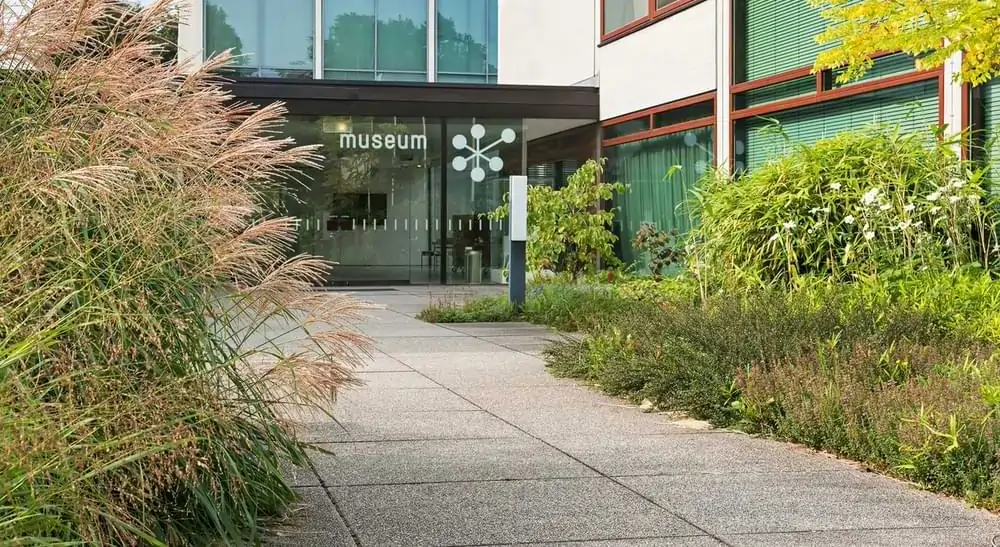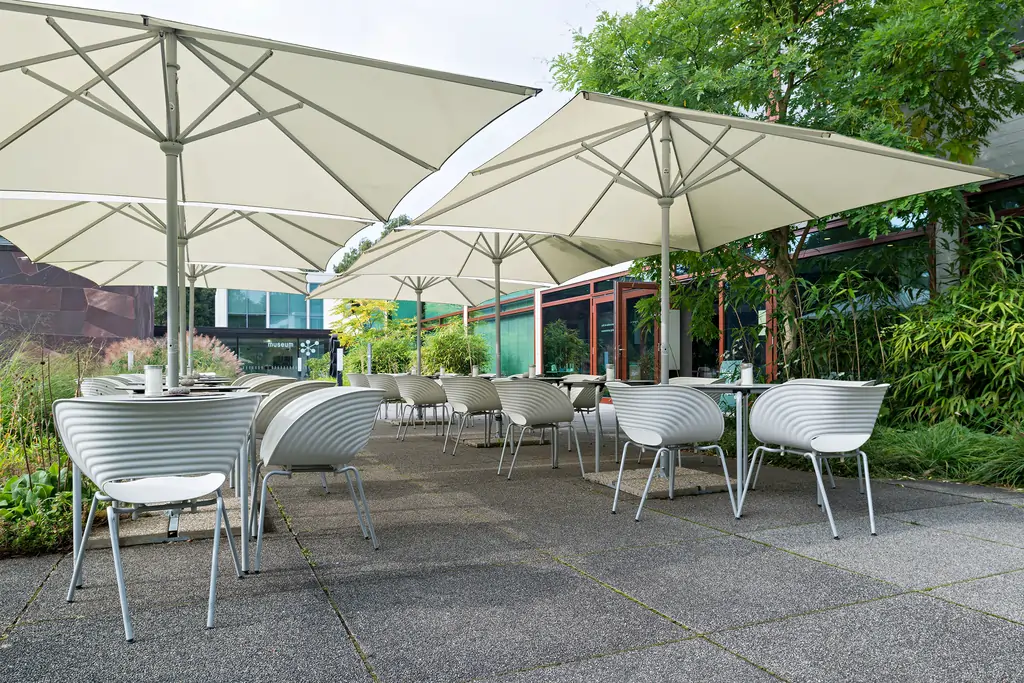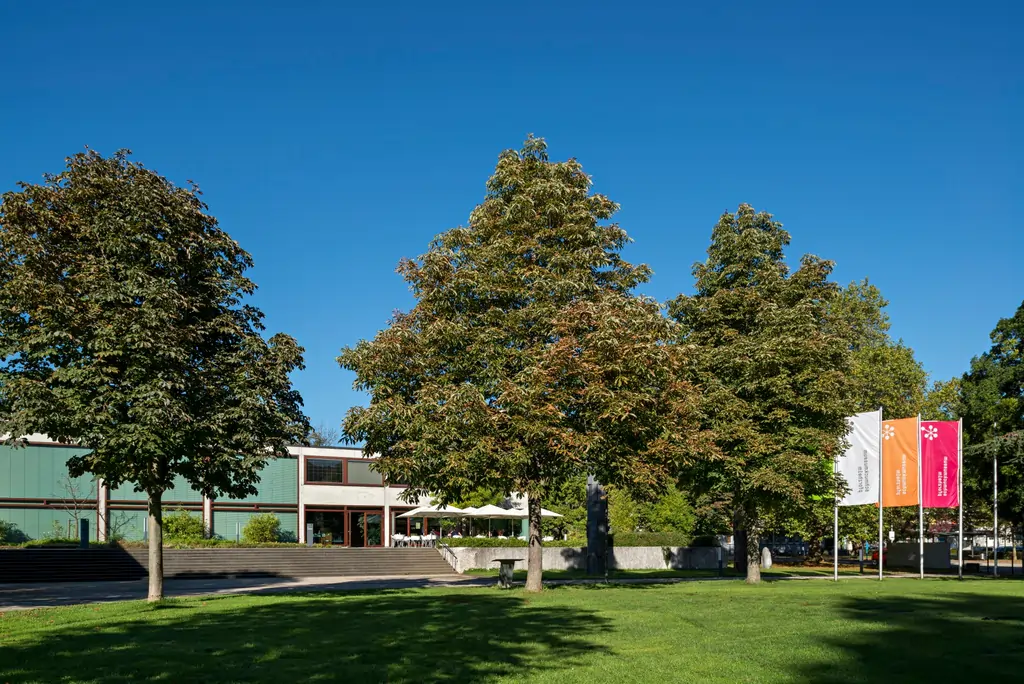
Schmuckmuseum Pforzheim
Gold jewellery told with silver crystals
An Etruscan ornamental disc from the collection of the Pforzheim Jewellery Museum has travelled back to its country of origin, Italy. In the Lightcatcher studio of Kurt Moser and Barbara Holzknecht, the extremely fine ornamental material structure of the piece of jewellery, which is only four and a half centimetres in size, was captured with the high-contrast visual language of ambrotype. The centuries-old imaging process makes it possible to experience the technical perfection and design sophistication of ear jewellery in a new and unique way. After days of preparatory work in their self-built corridor camera, the Lightcatchers captured the Etruscan ear disc on a 70 by 90 centimetre black glass plate using this very complicated and capricious process. They literally found themselves in their self-made camera. “The masterpiece of ancient goldsmiths now finds itself immortalised on an ambrotype,” says museum director Cornelie Holzach with delight. It can be seen in the historical collection of the Museum, where the Etruscan original also is on display.
The ambrotype is a unique piece that can neither be manipulated nor reproduced. This technique, dating from 1850, is used to create light paintings on black glass plates. Characteristic of the black and silver images is a sharpness that emphasises every detail; an imagery that is particularly suited to the extremely precisely crafted ornamental jewellery of the Etruscans, whose surface is covered with tiny gold beads. These spheres form the structure of the entire ornamentation and are as small as grains of dust – a technique called granulation mastered by the Etruscans around 600 BC to a degree unmatched today.


Herta Gebhart – Coco Chanel from Westphalia
Pforzheim’s Jewellery Museum presents online photo exhibition
The Pforzheim Jewellery Museum has designed an online photo exhibition about Herta Gebhart (1919-2017), the Coco Chanel from Westphalia. In different virtual rooms, visitors can move through the multimedia show in an exciting ten minutes, which increases from room to room. The fashion designer’s creations can be viewed in detail. Sophisticatedly cut dresses are perfectly combined with accessories such as bags, umbrellas or hats and even wigs, always accentuated with extravagant jewellery by Friedrich Gebhart, her partner in life and work. “When we received extensive information material about Herta Gebhart from the family’s estate, we were immediately fired up to make it accessible to the public via an online photo exhibition”, explains museum director Cornelie Holzach. What visitors to the Jewellery Museum find in analogue form on site is completely digital for the first time in this project – the location, the exhibits, the presentation and the exhibition as such. The show was conceived under the direction of Cornelie Holzach and Katja Poljanac from the Jewellery Museum and the designer Kay Prühs, who created the virtual rooms.
About Herta Gebhart
Herta Gebhart was a multi-talented designer. Originally a metallographer, she gave up this profession as a young woman to go to fashion school in Frankfurt. She concealed this step from her parents and financed herself by sewing at night. After graduation, she set up her own business in Frankfurt with her husband Friedrich Gebhart, a goldsmith. After years in Münster, she even learned goldsmithing from her husband. The artist couple convinced with sophisticated jewellery shows and at exhibitions at home and abroad. The result was the perfectly shaped jewellery-dress combinations, without commercial constraints, which Herta Gebhart tailored to her own body and for which she was later awarded prizes. She even created bags and umbrellas in her studio and received awards for them as well, so that she was called the Coco Chanel from Westphalia.
To the virtual exhibition rooms The virtual exhibition with its futuristic look breathes the spirit of the 1960s and 70s. It consists of six polygonal rooms, modelled on an emerald cut and strung together like a string of pearls, which viewers can pass through one by one via trapezoidal corridors.
These six rooms reflect six decisive phases in Herta Gebhart’s life, from her first contact with the fashion world to her visit to a fashion show in Paris, her life in Frankfurt, her relationship with her husband and her successes, to her own attitude to life and work as a woman in the fashion world.
Peculiarities of the animation The film has no visible cuts. In order to reflect Herta Gebhart’s life stylistically as well, it slowly gets light in the first room to shed light on the protagonist’s life, which darkens again in the last room under a luminous starry sky worthy of a fashion star.
Herta Gebhart as a voice from offstage On their tour through the exhibition, visitors are guided by Herta Gebhart herself. Her off-screen voice, taken from a WDR interview in 2010, was underlaid with background noise to create an auditory space. For example, the clatter of a mechanical typewriter in the first room created an office at the end of the war, the arrival of a train and a French announcement in the second room created a visit to Paris, and so on. The sounds in the background lend an imaginary stage set to the speaker’s words and provide a link between her narratives and the virtual exhibits.
Those who want to learn more can also take a look at each exhibit in a database on the website.
The photo exhibition is accessible via the online portal of the Pforzheim Jewellery Museum:
www.schmuckmuseum-digital.de
www.jewellery-museum-digital.com
